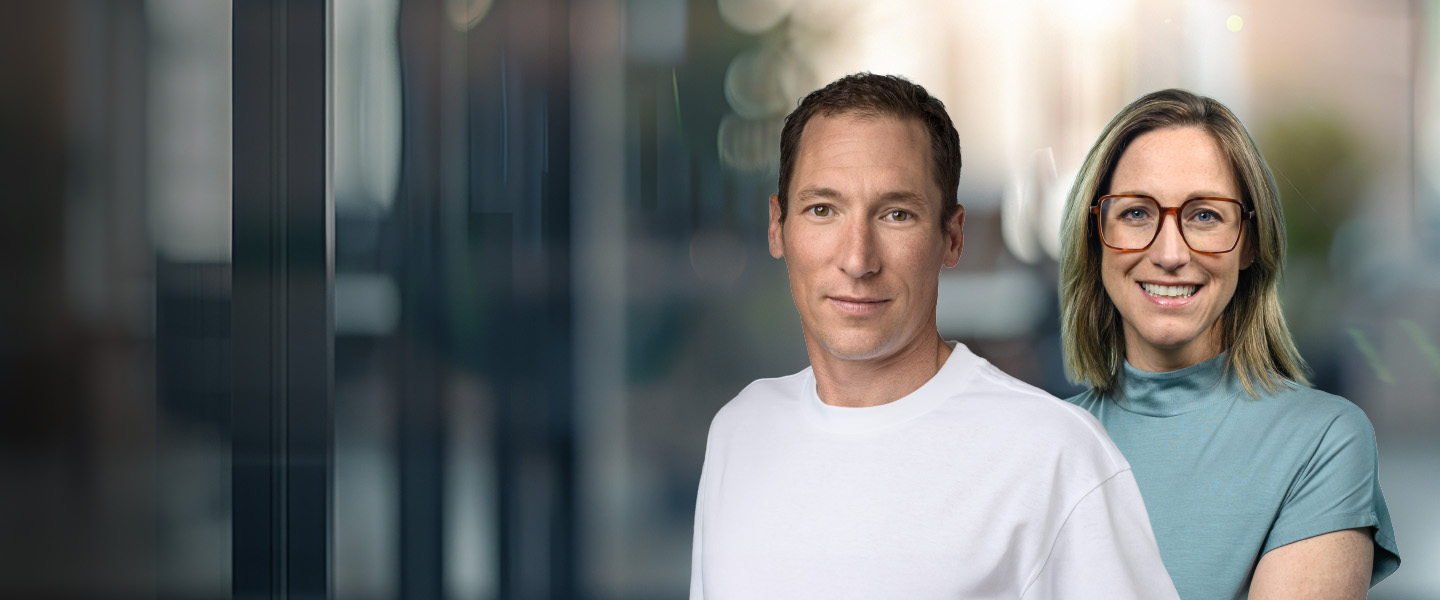
In the field with Roche
At a glance
- Between 2016 and 2023, pharmaceutical giant Roche embarked on an ambitious program to transform its organization, processes, people and ways of working. Roche succeeded, reaffirming its identity and purpose as a science-based, patient-centered company.
- Across Roche, the process produced an “unlocking” of potential, improving profit margins, ramping up R&D investment, diversifying the leadership team and talent base, streamlining processes and strengthening the quality of decision making and nurturing leaders.
- In addition to pursuing efficiency and growth, Roche managed to broaden its innovation pipeline, break down legacy silos and increase collaboration across the group.
In its more than 120-year history, Roche has been a steady source of a wide range of significant scientific and medical breakthroughs. Nonetheless, by the mid-2010s its traditional, hierarchical organization and work culture had become difficult to mobilize and navigate, particularly in response to new competition and the rise of digital trends in healthcare. Operating in an increasingly VUCA environment, could Roche up its agility and not only adapt to disruption but successfully compete and thrive in it?
With a large workforce spread over 100 countries, how did Roche conceptualize, architect and execute the shift to empowerment, autonomy and self-leadership?
The broader issue
The proliferation of digital technologies, nimble competitors, new business and service delivery models, and other disruptions has led many incumbents to pursue adaptability and speed, in the hopes of acquiring start-up-like attributes. Agility – and the mindsets, behaviors and methodologies associated with it – is often seen as the best vehicle for enabling organizations and workforces to embrace and even thrive on uncertainty.
Roche executives understood early on that a company would need to find the flavor of agility that reflected its history, context, industry dynamics and core values. For Roche, these included its legacy as a family-owned business and its overarching purpose of, “Doing now what patients need next.” Roche’s leadership put forward the Roche Agility Framework (see Figure 1), combining the obvious goals of flexibility and speed with the somewhat less obvious goal of stability, believing it would serve as a backbone and empower transformative change across the entire organization.
Importantly, the transformation had to be co-created and carried out by the people, not imposed. That required bringing all employees on board with the transformation’s goals and invigorating their personal connection to the company’s long-standing purpose and values. To do this, Roche had to acknowledge that the weight and size of its internal bureaucracy were distancing employees from the company’s stated purpose of customer and patient centricity. Increasingly, that purpose had been drowned out by managers’ reactive behaviors such as pleasing the superior, engaging in turf wars and fighting to secure additional funding for one’s department.
Implementing the Agility Framework
Reimagining leadership
The first step in the transformation was to help leaders understand the direct impact their mindset and behaviors had on the effectiveness of their leadership. The personal leadership work introduced participants to a different kind of organizational conversation, focusing on possibilities and pushing boundaries rather than debating existing constraints.
The idea was to discard and replace patterns of thought and communication that weren’t helpful in the emerging dynamic setting. Instead, their roles would be recast from the old command-and-control paradigm to one of leadership as a practice of principles known as VACC – visionary, architect, coach and catalyst.
Reasserting Roche’s identity as a science champion and leader
The Roche workforce needed to internalize that agility was a means to an end that would enable the company to achieve tangible business objectives, including a long-term boost to financing its core R&D activities. Roche was committed to remaining a science-driven organization.
Roche had consistently invested about 20% of its sales in R&D – more than any other healthcare provider. This investment fed an innovation pipeline for new medicines, diagnostic tests, instruments and digital health solutions and services. Yet the years leading up to the transformation saw a fall in absolute R&D spending. Future success would be hard to attain without increasing investment in the research function.
“To put it simply, efficiency alone won’t bring us to our purpose. I can have the best financial accounting system, but it won’t matter if I don’t have creative scientists and clinicians who can come up with a new concept.”
– Severin Schwan, current board chairman and former CEO
Empowering the workforce for quality leadership
Employee empowerment was vital to the transformation. Roche needed leaders that could enable employees to connect and work in more self-sufficient, creative and networked ways. By implementing the necessary training, methodologies and tools, Roche was committed to support novel ways of thinking, doing and collaborating and hoped these would scale across the organization.
This philosophy was complemented by a networked approach designed to break down silos and build relationships across teams as a way to foster real problem solving and value creation for patients and customers.
Structures and processes were simplified. Where appropriate, support functions were consolidated and centralized, ensuring that support was available to all country operations and workplaces, no matter how small. In addition, the duplication of efforts and resources was tackled radically. For example, the Diagnostic division streamlined 48 systems of quality management into one.
In terms of recruiting, developing and promoting talent, particularly at team leader levels, Roche began consciously and systematically choosing candidates who were systems thinkers, individuals who could maintain a holistic perspective on the increasingly complex and fragmented frameworks of delivering healthcare to patients, who were keen to experiment, to learn from failure and to share their learning with teams and colleagues, and who could swiftly prioritize and redirect resources.
Making tough choices
Competing demands – tensions: As the transformation evolved, managers came to appreciate the intricate dynamics of agility as a way to navigate and reconcile tensions and competing objectives. For instance, it was important that the autonomy bestowed on teams and local operations strengthened the quality and speed of decisions made for the benefit of customers and patients and not to reinvent what had worked well.
Some of the transformation’s lessons took shape on the go and some in retrospect: Among them, the critical role of middle management as the connector of top-down programs with bottom-up initiatives – a role that had not always been obvious amid the push towards empowering the frontline and removing entire layers from the old organizational setup.
In pursuing agility, the journey itself had to be agile and adaptable: This became particularly apparent during the Covid-19 pandemic when certain pockets of Roche – the manufacturing arm of the Diagnostics division, for one – had to be temporarily exempted from the change process. Under the circumstances, operating at several times its foreseen capacity to churn out Covid tests took priority over redesigning its inner structures.
Did it work?
Across the group, Roche employees have successfully adapted to having more accountability, more responsibility and more influence on what was happening daily. Despite citing transformation fatigue, staff engagement levels at Roche have improved or remained unchanged since 2019. The company was also much less affected by the Great Resignation than some of its competitors.
In terms of business results, Roche Group’s sales in 2022 were up 25% compared to 2016.
The additional R&D funding has paid off. As of June 2023, the Roche product portfolio was so young that launches dating from the end of 2015 represented 50% of Pharma sales. Roche had become No.1 in neuroscience, hemophilia and multiple sclerosis, and was advancing rapidly in ophthalmology. These were accomplishments that would have been unimaginable in 2016.
The transformation process also enhanced the internal relationships and synergies between Roche’s largest and historically siloed divisions (Pharma, Diagnostics, Genentech, Diabetes care). The cultural change within the group pushes a case for collaboration and future opportunities across divisions.
Takeaways
- Any program developed to build agility must affirm and connect the context, industry, competitive dynamics, core values and purpose of the organization.
- Speed is not the be-all and end-all of pursuing agility. Consider what other pillars, such as stability, your organization can lean on throughout its transformation. Often overlooked, these are typically factors that transcend an individual CEO’s tenure and go on to serve the company well for decades.
- Transformations are led and co-created by people, not imposed. Giving employees the right vision, vocabulary and incentives (knowledge and tools) is crucial in leading them from “have to” to “want to.”
- Because of the continual nature of modern-day organizational change, transformation fatigue will inevitably set in. Consider how to neutralize it through signposting, storytelling and, where appropriate, segmenting the process.
- Be agile in the way you approach designing for and strengthening agility. Take time to test, absorb and reassess partial outcomes.
This article is based on IMD case IMD-7-2478, available from The Case Centre at www.thecasecentre.org.
Research Information & Knowledge Hub for additional information on IMD publications
The B case outlines how, by early 2025, Isabella Phoenix's initial vision for HP's Amplify Impact sustainability program had grown into a global initiative involving 4,800 partners in 48 countries. The program surpassed its goals, enrolling 59 of ...
The A case in this two-part series outlines the challenges Isabella Phoenix faced in designing a global sustainability program for HP's vast network of channel partners in just 12 weeks with only one team member and limited resources. The initiati...
Absa faced a critical rise in cyberattacks, and with the cybersecurity talent gap widening, the company urgently needed a long-term solution. To address this, former CISO Sandro Bucchianeri launched the Cybersecurity Academy in 2019, an initiative...
Despite geopolitical upheavals that threaten global growth, companies continue to see business opportunities across borders. As leaders strategize how to position their operations amid war, trade disputes, disease outbreaks, and climate change, ha...
Last week, a notification flashed. “Add your email address for extra security,” my phone chirped. It was from WhatsApp. I stared at the screen, a single question forming in my mind: Security? Or surveillance? I tapped “No.” The feeling wasn’t ange...
Research Information & Knowledge Hub for additional information on IMD publications
Case reference: IMD-2681 ©2025
Research Information & Knowledge Hub for additional information on IMD publications
Research Information & Knowledge Hub for additional information on IMD publications
Case reference: IMD-7-2642 ©2025
Research Information & Knowledge Hub for additional information on IMD publications
in I by IMD Brain Circuits 8 July 2025
Research Information & Knowledge Hub for additional information on IMD publications
in I by IMD
Research Information & Knowledge Hub for additional information on IMD publications
in I by IMD
Research Information & Knowledge Hub for additional information on IMD publications
Research Information & Knowledge Hub for additional information on IMD publications
Research Information & Knowledge Hub for additional information on IMD publications
Research Information & Knowledge Hub for additional information on IMD publications






